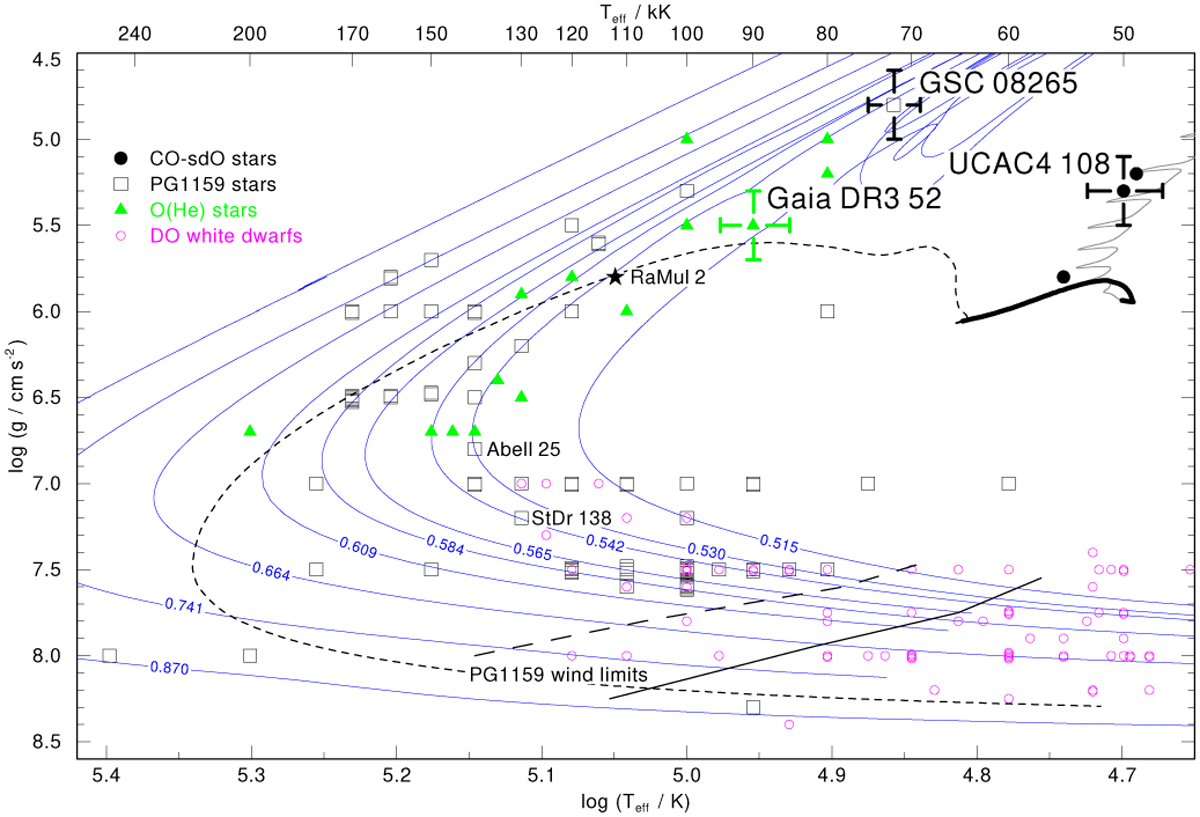Fig. 1

Download original image
Positions of our program stars in the Kiel diagram (with error bars), together with other hydrogen-deficient stars: CO-sdO stars, PG1159 stars, O(He) stars, and DO WDs. The PG1159 central stars of Abell 25 and StDr 138 and the [WC] central star of RaMul 2 (star symbol) are labeled. Evolutionary tracks (blue lines) for VLTP postasymptotic giant branch stars labeled with the stellar mass in solar units are from Miller Bertolami & Althaus (2006). The pre-He-core-burning phase of a 0.8 M⊙ remnant of a He+CO WD merger (Z = 0.001, He = 0.32, C = 0.20, O = 0.48) is visualized by the thin gray line, the He-coreburning phase by the thick black line, and the post-He-core-burning phase by the short-dashed black line (from Miller Bertolami et al. 2022). The solid black line indicates the PG1159 wind limit according to Unglaub & Bues (2000): the mass-loss rate of the radiation-driven wind at this position of the evolutionary tracks becomes so weak that heavy elements are removed from the atmosphere via gravitational settling. Thus, no PG1159 stars should be found at significantly cooler temperatures. The long-dashed line is the wind limit assuming a ten-times-lower mass-loss rate.
Current usage metrics show cumulative count of Article Views (full-text article views including HTML views, PDF and ePub downloads, according to the available data) and Abstracts Views on Vision4Press platform.
Data correspond to usage on the plateform after 2015. The current usage metrics is available 48-96 hours after online publication and is updated daily on week days.
Initial download of the metrics may take a while.


